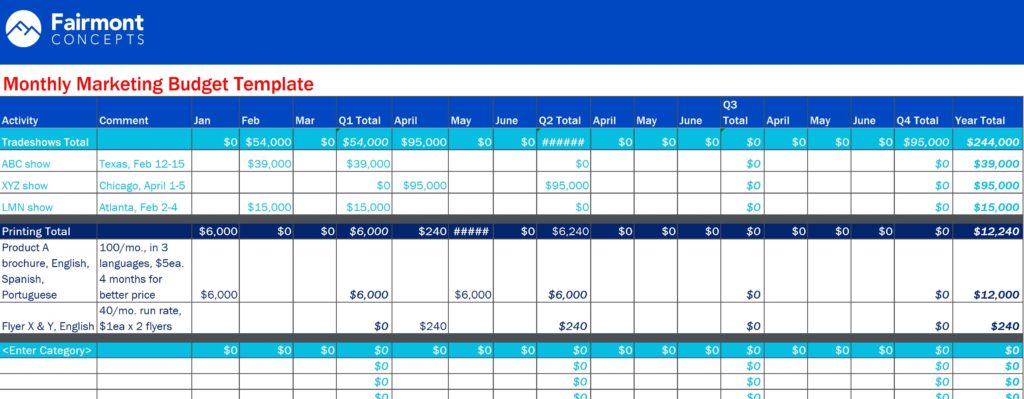As we approach the last quarter of the year it’s time to start thinking about budgeting. Do you struggle to get the marketing budget needed to generate leads and build brand? If so, you’re not alone.
Manufacturing companies tend to spend far less of their revenue dollars on marketing compared to non-manufacturing companies. They starve their commercial engine. Why? Manufacturing companies have a lot more to worry about (and fund) than non-manufacturing companies. A service organization doesn’t have a complex supply chain to deal with. A re-seller doesn’t have to plan production or invest in R&D. Manufacturing is a difficult and complex business, and the leadership team tends to have technical and financial backgrounds, not commercial backgrounds.
Marketing must have the funds necessary to grow brand and generate leads. Your marketing team must be able to justify the marketing budget and turn that budget into sales. The budget must be aligned with the company’s strategic plan, include input from the customer needs analysis, and be targeted to the end markets that provide the company the most value.
Your current budget allocation
Figure 1 shows a typical marketing budget allocation (excluding labor) for a mid-sized manufacturer selling high dollar products. High dollar is defined as products that commonly sell for over $10,000 each, but can exceed $100,000 or even $1,000,000 each.
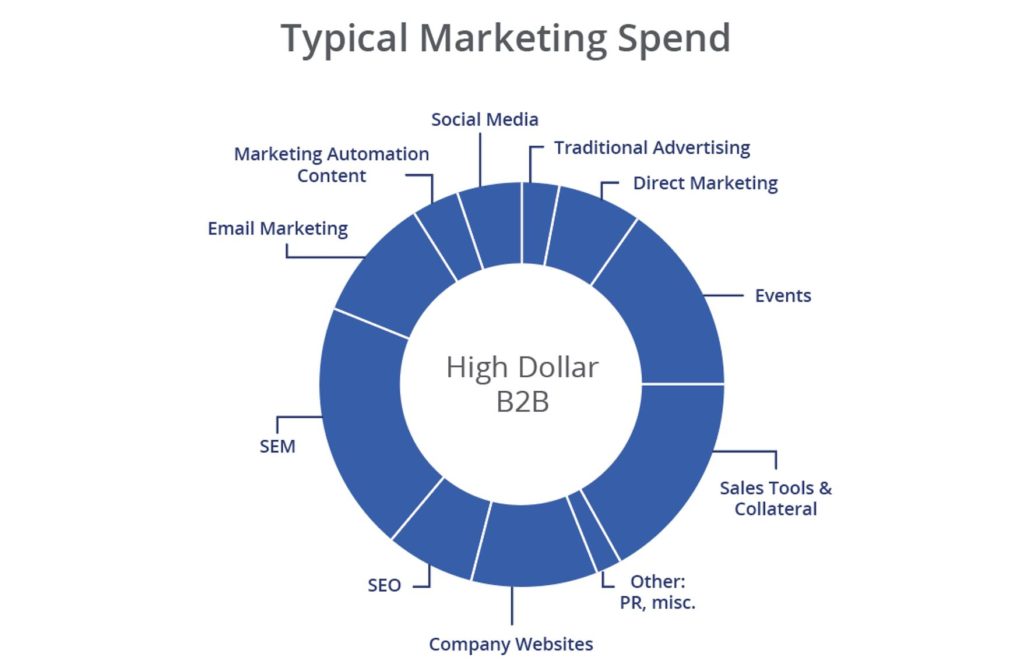
Figure 1 depicts a typical budget allocation for a manufacturer of high-dollar products
As Figure 1 suggests, marketing has many ways to spend the budget. Potential customers react to different types of interaction, and so a multi-pronged approach is usually best. High-dollar sales are different. Companies selling lower dollar items might have a very different pie chart. They might have an online store, thereby increasing allocation to the website, and they might spend little on events such as tradeshows or open houses. It’s important that you create a chart like this one to understand your current spend allocation.
Just to be clear, here are some quick definitions:
SEO is search engine optimization, where you make your website easily found by your audience and try to move up on the organic search section of the search engine results page (SERP).
SEM is search engine marketing, where you advertise on the web. There are two common forms of SEM. The first is paying for Keywords that your target audience tends to search for when looking for offerings like yours. If you bid enough versus your competitors for that keyword, then you will come up in the “Ad” area atop the SERP. The second form of SEM is Remarketing. Here, a visitor who found your website using a certain search engine will then see your ad show up as they visit other sites using the same search engine. SEM activities are typically pay-per-click, meaning you are only charged if the person takes the action you desire.
Marketing Automation Content includes the costs to create, schedule, and send emails to your target audience for two purposes: to nurture lower quality leads to sales ready status, and to send content in response to a request or behavior of your potential customer (such as visiting your website and downloading whitepaper).
Direct marketing includes postal mail, cold calling, and knocking on doors.
Cost per Lead
Once you have identified how much you spend on each marketing activity the obvious next step is to uncover your cost per lead by source. This vital budgeting data helps you understand the return on investment for each marketing activity. The result can be illuminating. Here’s an example.
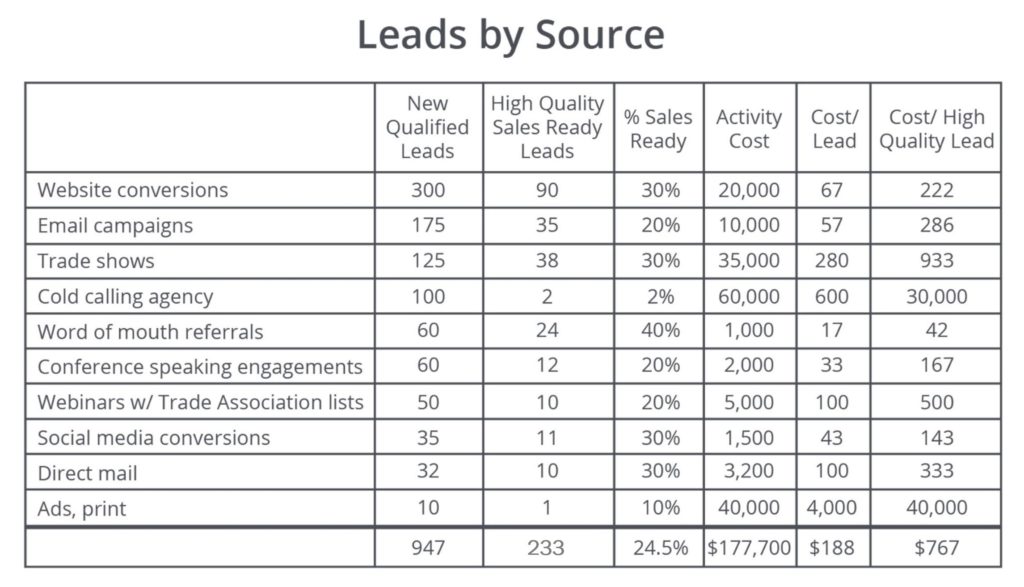
Figure 2 offers an example of cost per lead by source for a manufacturer of high-dollar products.
You might utilize many other marketing activities not shown in Figure 2, such as billboards, open houses, or leads from indirect sales agents. It can be difficult to clearly identify the true lead source. A new lead might have come in via filling out the contact information on your website, but they actually became interested by seeing your magazine ad. During new lead qualification train your staff to dig for the true lead source.
In the Figure 2 example, we see the following:
- The marketing department has an average cost of $188 to generate a lead. It’s common for manufacturers of high-dollar products to see a range between $150 and $300.
- The company distinguishes between all leads and high-quality sales ready leads. A high-quality sales ready lead is one where the potential customer is considering or in the buying cycle, and this lead should be handled by the sales person responsible for closing business. Lower quality leads are still important; they are typically held in marketing where nurturing activities such as educational or promotional emails are sent.
- The activity that generates the most leads was the company website.
- The activity with the lowest cost per lead was word of mouth referrals. Referrals also gave the highest percentage of high-quality, sales ready leads.
- Some marketing activities such as ads and articles in trade magazines show a poor return on investment. However, these types of activities are intended to advance your brand more so than generate leads. Don’t cut all brand-associated activities. Building brand is very important, and gives fuel to the other lead generating activities
- Another activity of note in this example is “Cold Calling Agency.” Here, the company hired a cold calling company to make calls into target end markets. They followed a script and generated a lot of leads. However, the cost was high and the number of high-quality leads generated result was low. I have found that cold calling is effective only when you have a small, highly-targeted list and your offering has proven to be of extreme interest to the small group. Shotgun blasts using cold calling can increase your lead count, but rarely increase your sales.
Other Benchmarks
What sort of numbers are common in the manufacturing sector? Figure 3 and Figure 4 offer up benchmark data. Of course, any benchmark data provided here has to be with the caveat that the data is typical for one particular industry segment: manufacturers of high-dollar products selling for, in this case, an average of $150,000 each. If this data is representative of your market, then perhaps Figures 3 and 4 will be useful in your budget justification. If not, then at least it can act as an outline for the type of benchmark data you might want to research.
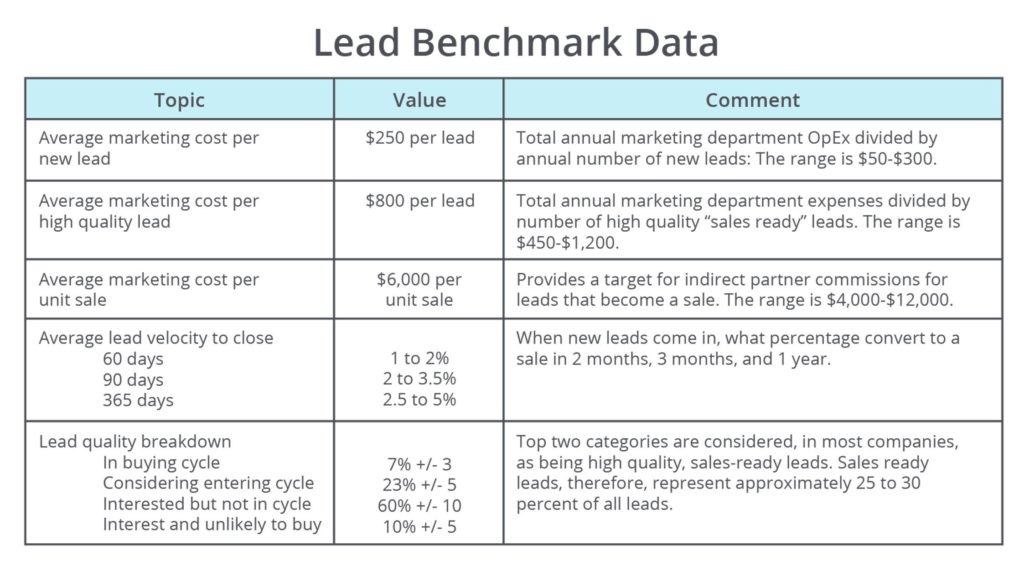
Figure 3 offers typical benchmark data for a manufacturer selling high-dollar products
The benchmark data in Figure 3 provides potentially valuable budgeting data such as the cost per lead, the typical sales cycle, and the percentage of sales ready leads.
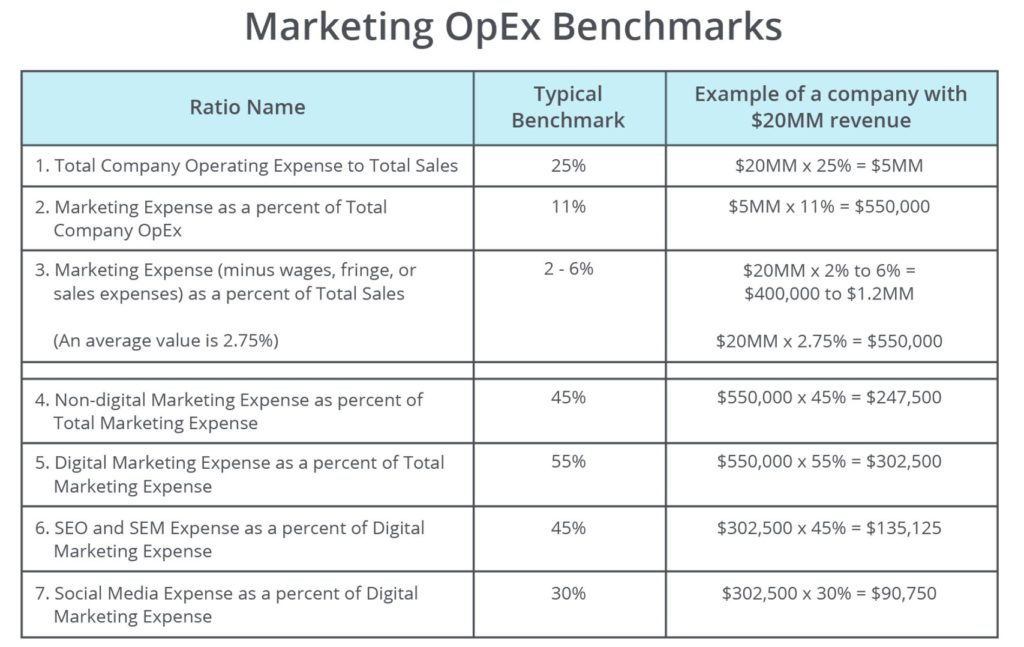
Figure 4 offers typical Operating Expense benchmark data for a manufacturer selling high-dollar products
The common operating expenses shown in Figure 4 suggest that the marketing budget should be between 2 and 6% of revenue – the most common amount is 2.75%. Market leaders tend to spend more on marketing than others.
Once you have your cost per lead by activity and benchmark data, you are ready to create and justify your budget.
Budgeting Template
An organized budget template helps you plan your year, even out spending, and communicate your plan to the leadership team. Below I offer a budget template that has a few key features. It provides not only a detailed schedule of all activities, but also groups them into buckets and provides quarterly and annual roll ups. It is a planning tool, not a tracking tool. You can download it here.
Figure 5 is a downloadable template for organizing and presenting your marketing budget plan.
With the budget template filled out, benchmark data ready, and past return on investment analyzed, we’re ready to create and present our justification to the leadership team.
Justify the Budget
Much of business is about selling ideas. You need to sell your marketing spend plan. Give company leaders confidence that you have done your homework, and that you have put together a reasonable plan that has the best chance to deliver a solid return on investment. Nothing in marketing is a sure-fire thing. We must create the best plan we can, then learn and adjust.
When you put together your budget justification, consider these components.
- Explain that your role is to build brand and generate leads. Brand helps explain to the market who you and why your audience should engage. It is about a feeling more so than a fact. Brand helps drive word of mouth referrals, the most profitable of all lead sources. Lead generation is the fuel to your commercial engine. Lead source is not always clear, so it is best to have a multi-pronged approach to touching your target markets.
- Align with company strategy. Show that you intend to focus on brand and lead growth in step with the direction the leaders are taking the company. Consider company strategy as well as target end markets.
- Show your budgeting ROI. You are allocating funds to the most cost-effective lead generation activities. Use your versions of Figure 1 and 2.
- Consider showing benchmarks to the leadership team. Before including the data, be sure they will be receptive to the information and not just consider it as a way to justify a higher budget.
- Consider channels. I haven’t talked a lot about channels so far, but if you use indirect sales agents and distributors then your budget needs to include dollars for these go-to-market channels.
- Provide your annual budgeting plan in a form similar to Figure 5.
You can roll the items above into a leadership team presentation that paints a clear picture of your strategy, tactics and intended return on investment.
Summary
It’s not easy to get the funds you need for marketing within a manufacturing company. There are so many other pressing issues regarding supply chain, production, shipping, quality, and labor. However, your company’s health relies on your ability to create an effective marketing budget and then justify it to the leadership team.
Go get the money needed to feed your commercial engine.
Latest posts by Chip Burnham (see all)
- Value Pricing Retains Both Customers and Profits - November 14, 2018
- Voice of the Customer – Needs Research - October 17, 2018

